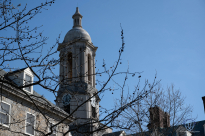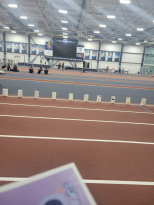Wild Life Science
Tommy Ruland is a senior Wild Science major at Penn State with a focus in ornithology.
Unlike a typical college student, Ruland has been on many walks through countless parks ranging from coast to coast, studying birds. His description of birding is unlike any I have ever heard. To some, birding sounds like a hobby, but to Ruland, it’s an in-depth way to study the evolving nature of birds — including taking that step off the beaten path to find that hidden nest.
 The journey into Walnut Springs Park in State College, Pennsylvania.
The journey into Walnut Springs Park in State College, Pennsylvania.
Part of Ruland’s challenge is studying in his own nest to outsmart the birds he is tracking.
Another way he provides positive services for the world of birding is by using a bird feeder to help the birds through the winter who have problems finding food on the snow-covered trees, shrubs and ground. He does not provide food beyond a single time in the beginning of the winter so the birds have to find food through the winter on their own.
These bird feeders Ruland and many others provide for natures birds are basically restaurants for birds during migration or the local birds that know where to fly.
Birding is Ruland’s passion and was kind enough to take me out to Walnut Springs Park, located off University Drive in State College.
But State College locals aren’t the only ones that enjoy the park —also many different wild birds make their home in the park. Walnut Springs is busy twenty-four hours a day. In the morning, when the sun is highest in the sky, both runners and birds make their way through the forest. The birds take the higher route and search for food while runners may take their pets and make their way through the multitude of paths the park has to offer.
During my journey in the park I ran into many types of birds, and I was lucky enough to see two American Robins chasing each other and three Cardinals flying through the forest all chasing after each other.
Ruland took me further into the park and showed me a few different locations where we stopped and rested by running water. As we moved further into the park we crossed over two bridges to reach key vantage points.
The first was a hut of with four holes cut into it to locate some of the local birds. The other position was just past the man-made bird’s nest and up a hill. We reached the top and the view was spectacular.
The best the part about being on the top of the hill was that we had a bird’s eye view of the entire park. Birding has opened my eyes to all the different fields of science that can easily go unnoticed.
Side-bar Slide-show
For the side story of this current story we focused on the birding side of the wild life sciences. I was able to go out in the field and capture a few birds on video. The few things that stood out more then others in the forest was how the birds almost seem to take into count that I had equipment. The Blue Jay that I was able to film purposely flew in front of my lens. Its almost in their nature to know whats going on.








